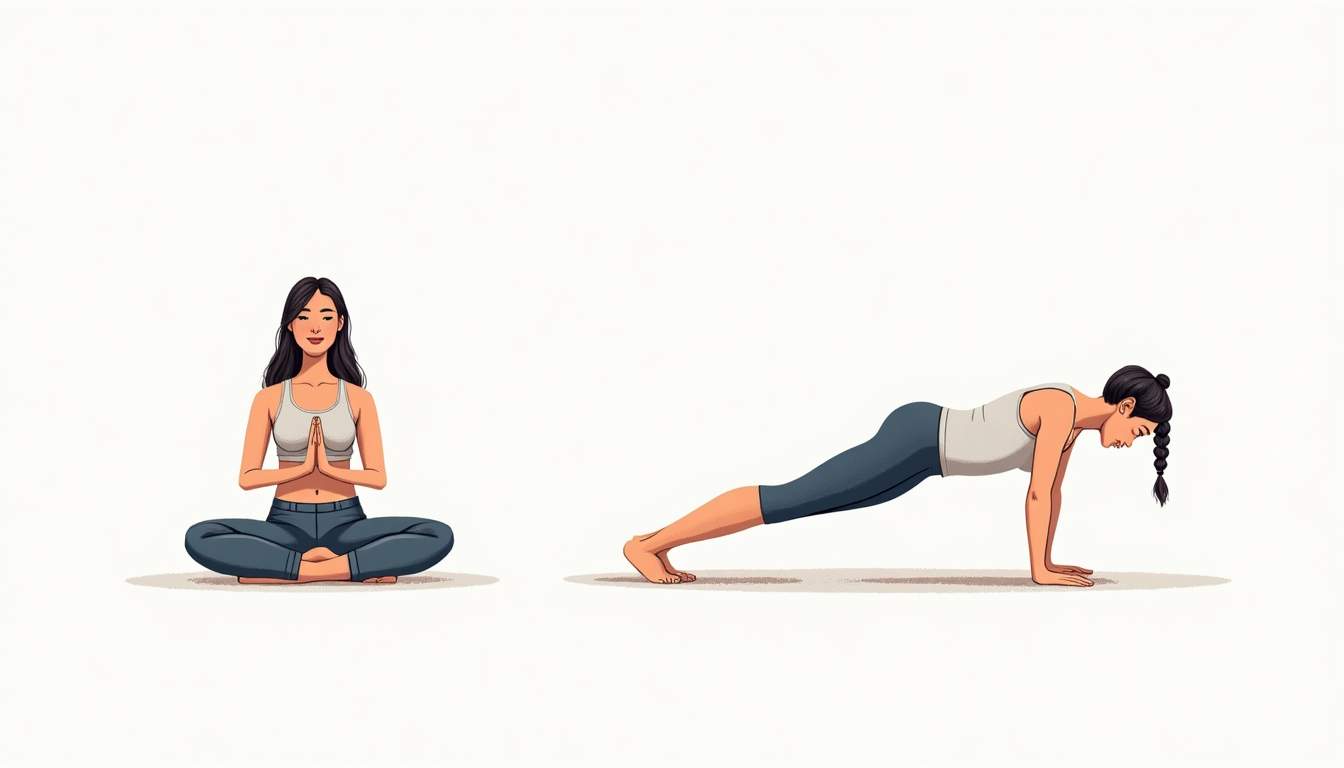
Paddleboarding fits somewhere between a gentle meditation and a full-body workout. On still water, the paddle’s rhythm and the board’s slight motions invite concentration; the requirement to stay balanced builds strength through tiny, constant adjustments. The result is a practice that develops core stability, enhances posture, and cultivates a calm, attentive mind. This article explores how paddleboarding benefits both body and mind, how to get started safely, and how to build sessions that emphasize core engagement and mental clarity.
Balance is the primary reason paddleboarding strengthens the core. When standing on a board, every micro-shift of the hips, torso, or legs triggers the abdominal and back muscles to respond. This continuous, low-level activation recruits deep core musculature—transverse abdominis, multifidus, pelvic floor—more consistently than many traditional gym exercises. Over time, that steady engagement develops endurance and coordination rather than just raw power.
Beyond balance, the paddling motion itself recruits core muscles dynamically. Each stroke is a rotational action: the torso turns, the obliques engage, and the lower back stabilizes. This dynamic pattern trains the core to produce force while maintaining stability, which translates to improved everyday movement economy and reduced risk of low-back discomfort. Unlike isolated core moves, paddleboarding trains the core in integrated, functional ways.
Moreover, the unstable surface of the water introduces an unpredictable element that challenges the body's proprioception—the sense of position and movement. This demand forces the nervous system to constantly adjust muscle activation patterns, honing neuromuscular control and reflexive core engagement. As a result, paddleboarding not only builds muscle strength and endurance but also improves the body's ability to respond effectively to sudden shifts in balance or posture.
Additionally, because paddleboarding is performed in an upright, standing position that mimics many real-life activities, it promotes postural awareness and alignment. Holding the correct stance requires subtle activation of postural muscles in the hips, spine, and shoulders, which supports spinal health and reduces compensatory movement habits. This comprehensive engagement fosters a resilient, adaptable core that supports both athletic performance and daily functional tasks.
Being on the water encourages attention to the present moment. Sounds are softer, horizons wider, and the body must continuously sense small shifts. These conditions naturally reduce rumination and promote mindful awareness. For many, the rhythmic sound of paddle segments and water lapping against the board functions like a metronome for breathing, easing the nervous system into parasympathetic activation and lowering stress markers.
The mental discipline developed on the board is subtle but powerful. Steady breathing and focused attention become habits that transfer to daily life: improved capacity to stay calm during stressful situations, enhanced decision-making because of clearer thinking, and a greater ability to tune into internal signals like fatigue or tension. Regular sessions create a feedback loop where improved physical balance supports mental steadiness, and vice versa.
Beginners benefit from wider, longer boards that provide more stability. Inflatable SUPs (stand-up paddleboards) are popular for their forgiveness and portability; many models offer a wide deck and soft surface that make learning more comfortable. As confidence and skill increase, a narrower shape can be selected to enhance speed and maneuverability. Board construction is also important: inflatable boards made with drop-stitch technology can be surprisingly stiff and supportive when inflated properly.
A leash is non-negotiable for safe paddleboarding; it keeps the board nearby in the event of a fall. A life jacket or personal flotation device (PFD) tailored for paddling adds buoyancy and peace of mind, particularly on windy or colder days. A paddle that matches height and stroke style reduces shoulder strain—generally, paddles should reach roughly 8–10 inches above the head when standing. Sun protection, water, and a small whistle complete a basic safety kit.
Check weather and water conditions before heading out. Wind, currents, and boat traffic change risk levels quickly. For first trips, choose calm, sheltered bays or lakes and stay close to shore. Practice falling away from the board to avoid hitting the fins, and learn how to remount efficiently. Paddling with a buddy is a sensible precaution for new paddlers, and taking a short introductory lesson can shorten the learning curve and reduce common mistakes.
Foot placement affects how the core works. A hip-width stance with knees soft and weight evenly distributed keeps the center of mass low and responsive. Aligning the shoulders over the hips and the hips over the ankles creates a vertical column through which forces distribute evenly. Eyes should look forward rather than down; this helps maintain balance and encourages a neutral spine. Small changes in alignment drastically change which core muscles engage.
Intentional paddling emphasizes core rotation rather than arm power. Start each stroke by rotating the torso and using the obliques to drive the blade through the water. The arms should act as connectors rather than prime movers. Focus on a long, efficient stroke: catch the blade forward, pull through with body rotation, and exit near the hip. This technique trains the core to generate and transfer force, increasing the functional strength that appears as improved balance and endurance on the board.
Simple on-board drills amplify core activation. Try paddling on one knee to challenge stability and force the core to compensate. Alternating between standing and kneeling can isolate different muscles and build resilience. Another drill is the "slow stroke": take deliberate, drawn-out paddles while maintaining a steady breath. This increases time under tension for the core without adding speed, promoting endurance and fine motor control.
Breath is the bridge between physical effort and mental state. Coordinating breath with paddle strokes creates a rhythm that anchors attention and moderates heart rate. A basic pattern is inhale during the recovery phase and exhale during the power phase of the stroke; this natural timing supports stronger, more efficient strokes and encourages deeper, slower breathing patterns overall.

Adding a few minutes of stillness at the start or end of a session enhances mental benefits. Sit or kneel on the board, soften the gaze, and focus on full inhales and long exhales. This practice reduces sympathetic arousal and can leave a lingering sense of calm that persists off the water. Even short, consistent pauses yield measurable improvements in mood and stress resilience.
Progression should follow a gentle arc: start with stability and awareness, gradually add movement and challenge. Once comfortable on a wide board in calm conditions, explore balance drills like shifting weight intentionally from side to side or practicing pivot turns. Introduce narrower boards or slight chop, but increase challenge only in small increments to keep the nervous system confident and adaptive.
Cross-training accelerates improvement. Mobility work for hips and thoracic spine enhances rotation and stroke length; glute and hip-strength exercises off the water bolster stability under dynamic loads. Core training on land that emphasizes anti-rotation and coordination complements on-board practice. The combined effect is more resilient posture, better stroke mechanics, and a lower injury risk.
Warm up with 5 minutes of breathing and a few gentle paddle strokes at low intensity. Spend 15 minutes paddling at a steady pace, focusing on long strokes and torso rotation. Finish with 10 minutes of seated or kneeling meditation on the board: breathe evenly, observe sensations, and allow the body to integrate the session.

Start with 10 minutes of dynamic warm-up—footwork and hip mobility on the board—followed by 30 minutes of mixed-paced paddling, including 5 sets of 2-minute higher-effort intervals with 3 minutes easy between. Add 10 minutes of balance drills (single-knee paddling, controlled side-to-side weight shifts) and finish with 10 minutes of breathing practice and gentle stretching on the board.
Relying too heavily on the arms is a frequent mistake that limits core engagement and leads to shoulder fatigue. Intentionally shifting the emphasis to torso rotation and leg drive reduces this risk. Another pitfall is looking down at the feet, which disrupts alignment; keeping the gaze forward improves stability and posture. Finally, pushing progress too quickly—attempting rough conditions or complex maneuvers before fundamentals are solid—raises injury risk and undermines confidence.
When integrated into a weekly routine, paddleboarding offers both physical conditioning and restorative time. Short, frequent outings maintain a baseline of balance and muscle engagement, while longer sessions offer deeper relaxation and cardiovascular benefit. The social aspect—paddling with friends or joining a local group—adds motivation and variety, turning a single activity into a meaningful habit that supports overall well-being.

Beyond measurable benefits, time on the water fosters an appreciation for nature and a clearer sense of pace in daily life. The practice encourages slowing down, noticing, and aligning movement with breath—qualities that show up off the water as improved focus, a calmer temperament, and a more grounded physical presence. For many, paddleboarding becomes a portable sanctuary: a place to strengthen the body and steady the mind.
Core strength and calmness develop best through consistent, mindful practice rather than occasional intense sessions. Small, deliberate efforts compound: five calm outings a month create more durable change than a single, exhaustive day. The aim is sustainable growth—building competency, curiosity, and a habit that supports both muscular endurance and mental balance. Paddleboarding invites patient progress, offering a practice that rewards presence as much as power.
Embrace a lifestyle that nurtures both body and mind at Tennessee National. Set against Tennessee’s stunning natural backdrop, our premier gated community provides the perfect setting to enjoy activities like paddleboarding, alongside exclusive amenities including a Greg Norman Signature Golf Course, private marina, and waterfront dining. Whether you seek a move-in ready home or a custom build, find your ideal retreat where wellness meets luxury. Schedule a private tour today and start making moments of balance and tranquility part of your everyday routine.